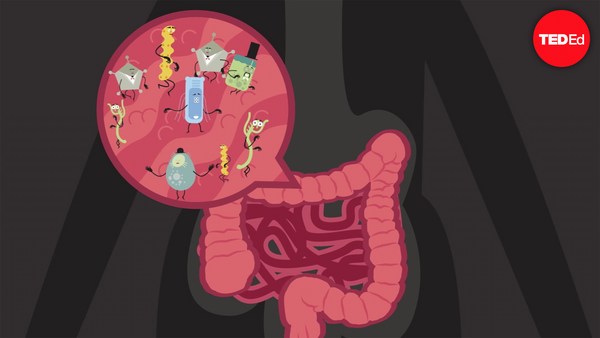In 1984, two field workers discovered a body in a bog outside Cheshire, England. Officials named the body the Lindow Man and determined that he’d suffered serious injuries, including blunt trauma and strangulation. But the most shocking thing about this gruesome story was that they were able to determine these details from a body over 2,000 years old. Typically, decomposition would make such injuries hard to detect on a body buried just weeks earlier. So why was this corpse so perfectly preserved? And why don't all bodies stay in this condition?
The answers to these questions live six feet underground. It may not appear very lively down here, but a single teaspoon of soil contains more organisms than there are human beings on the planet. From bacteria and algae to fungi and protozoa, soils are home to one quarter of Earth’s biodiversity. And perhaps the soil’s most important inhabitants are microbes, organisms no larger than several hundred nanometers that decompose all the planet’s dead and dying organic material.
Imagine we drop an apple in the forest. As soon as it contacts the soil, worms and other invertebrates begin breaking it down into smaller parts; absorbing nutrients from what they consume and excreting the rest. This first stage of decomposition sets the scene for microbes. The specific microbes present depend on the environment. For example, in grasslands and farm fields there tend to be more bacteria, which excel at breaking down grass and leaves. But in this temperate forest there are more fungi, capable of breaking down complex woody materials. Looking to harvest more food from the apple’s remains, these microbes release enzymes that trigger a chemical reaction called oxidation. This breaks down the molecules of organic matter, releasing energy, carbon, and other nutrients in a process called mineralization. Then microbes consume the carbon and some nutrients, while excess molecules of nitrogen, sulfur, calcium, and more are left behind in the soil.
As insects and worms eat more of the apple, they expose more surface area for these microbial enzymes to oxidize and mineralize. Even the excretions they leave behind are mined by microbes. This continues until the apple is reduced to nothing— a process that would take one to two months in a temperate forest. Environments that are hot and wet support more microbes than places that are cold and dry, allowing them to decompose things more quickly. And less complex organic materials break down faster. But given enough time, all organic matter is reduced to microscopic mineral nutrients. The atomic bonds between these molecules are too strong to break down any further. So instead, these nutrients feed plant life, which grow more food that will eventually decompose. This constant cycle of creating and decomposing supports all life on Earth.
But there are a few environments too hostile for these multi-talented microbes— including the peat bogs outside Cheshire, England. Peat bogs are mostly made of highly acidic Sphagnum mosses. These plants acidify the soil while also releasing a compound that binds to nitrogen, depriving the area of nutrients. Alongside cold northern European temperatures, these conditions make it impossible for most microbes to function. With nothing to break them down, the dead mosses pile up, preventing oxygen from entering the bog. The result is a naturally sealed system. Whatever organic matter enters a peat bog just sits there— like the Lindow Man. The acid of the bog was strong enough to dissolve relatively simple material like bone, and it turned more complex tissue like skin and organs pitch black. But his corpse is otherwise so well-preserved, that we can determine he was healthy, mid-20s, and potentially wealthy as his body shows few signs of hard labor. We even know the Lindow Man’s last meal— a still undigested piece of charred bread.
Scholars are less certain about the circumstances of his death. While cold-blooded murder is a possibility, the extremity of his injuries suggest a ritual sacrifice. Even 2,000 years ago, there’s evidence the bog was known for its almost supernatural qualities; a place where the soil beneath your feet wasn’t quite dead or alive.


